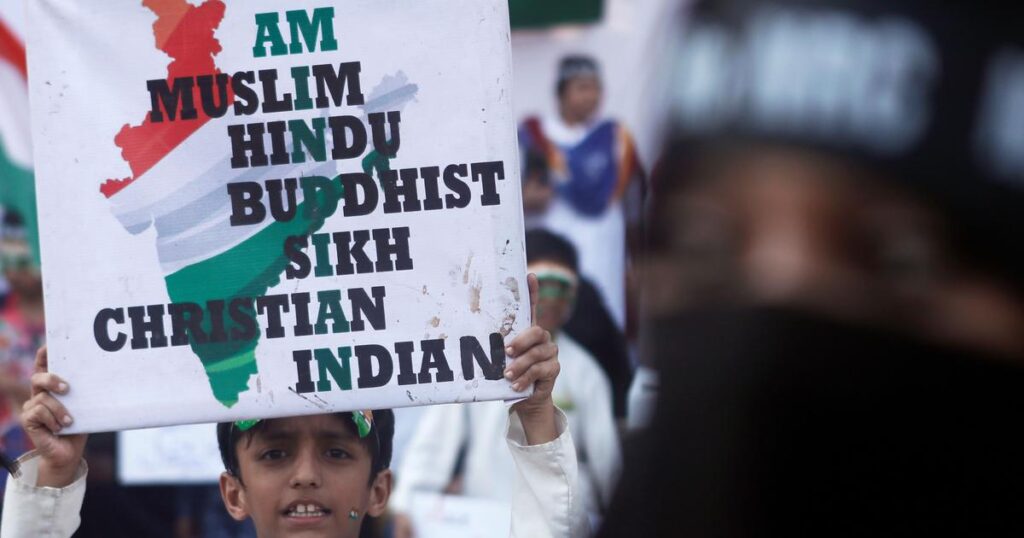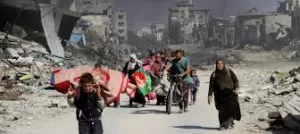There is a deep and growing disquiet over decisions of the Central and state governments and of courts of different jurisdictions on the incarceration of political dissenters and human rights defenders – its “beforemath” (to borrow an expression from American writer Yiyun Li) and its aftermath.
In the course of learning and deliberating on the Constitution and criminal procedure, we have been taught that procedural violations are violations of human rights and fundamental rights under the Constitution. This is all history, it would appear. But is it?
The disquiet over unjust incarcerations deepens with the simultaneous magnanimity and deferral of the same courts and government in the matter of release, remission, parole and discharge in the cases of aggravated and targeted crimes. These are crimes that come within the meaning of crimes against humanity perpetrated against denominational communities marked as “other” by new definitions of “citizenship”.
Banal neologisms like “urban naxal” are elevated to the status of judicial descriptors – thereby conferred official recognition as categories that invite carceral treatment disregardful of the absence of specific actions that might warrant arrest and prolonged detention/imprisonment; disregardful also of the law in place; and disregardful of the fact that strict adherence to procedure in criminal matters is central to the protection of human rights.
What is not acknowledged but growing by the day is the disquiet around the travesties of justice, where the long shadow of the khap panchayat falls on courtly environments bolstered by majoritarian rhetoric.
For this reason alone, it is time to turn the tide. By way of abundant caution, “turning the tide” is a term I use for a popular resistance that is non-violent – non-cooperation, satyagraha, ethical disagreement (not “bloodless”) – in the face of carceral treatment that is by definition blood-soaked and violent in visceral ways. Carceral treatment maims and foreshortens life and liberty of those incarcerated for their faith in the freedom of conscience on which the Constitution of this country stands.
I do not intend to repeat references to Zakia Jafri, activists Teesta Setalvad, and Umar Khalid. Nor do I intend to repeat a comparative assessment of the reversal by the Supreme Court of the acquittal of former Delhi University professor GN Saibaba and his co-accused on the one hand, with the remission by the Gujarat government, with sanction from the Centre, of the sentence of the men convicted for the gangrape of Bilkis Bano during the 2002 Gujarat riots. Although I assert this is a comparison that must be made.
In the context of the remission of the sentence of the convicts, I will not repeat the findings of various bodies, including the National Human Rights Commission on the Gujarat riots 2002, nor repeat the simple fact that the Central government (which sanctioned the remission) was the Gujarat government under whose watch these crimes were perpetrated in 2002 in the first place.
Allow me instead to recount earlier histories of courtcraft and judicial understanding on liberty for dissenters and freedom of expression that might saliently include “incitement”. As dissenting judge Justice K Madhava Reddi observed the case of Jwalamukhi vs State of Andhra Pradesh in 1972: “As observed by Justice Holmes, ‘every idea is an incitement’ and the propagation of every such idea cannot, in my opinion, be termed seditious.”
While repressive and authoritarian states might fear the power of the word so much that they invent banalities – “literary crime” and “verbal naxal” (to describe poets in the 1970s) and “urban naxal” (a third-grade masala cinema contribution to the state’s armoury in the present), the difference is that the 1970s courts ousted these banalities while the 2022 courts elevate them to the status of judicial commonsense. That is truly a sign of the treacherous road we travel on today.
Rather than speak about what Jawaharlal Nehru or 18th-century French statesman Maximilien Robespierre said about the word “revolution”, and what understanding they had of revolutionaries, I will digress to remind ourselves of what constitutional courts in free India have said about revolution and how parliamentary discourse has in the past discussed matters about revolutionaries (not just “protestors”) and their treatment by courts and the state.
Parliamentary debates on the treatment of Naxalite leader Nagabhushan Patnaik in prison in 1971, and the post-Emergency parliamentary discussions on state violence in 1977 are instructive in that they return to us a sense of history, as an assertion of memory against forgetting.
Writing, speaking, singing, public protest – on the roads, in universities and worksites – is public education on constitutional rights and provide occasion for citizens to remind governments of their fiduciary responsibilities set out in the Constitution.
Surely, irrespective of what levels of impunity governments claim and demand, we must at this time echo literary critic and writer KV Ramana Reddy, jailed during Emergency, who stood in court and asked:
“What on earth is this Parliamentary supremacy for? To beat down the judiciary?” (Court statement February 23, 1976.)
Then, as now, social transformation and public education is critical to the growth of constitutional commonsense. To recall noted Telugu poet Nikhileshwar’s words in court in 1971:
“The present society is the result of several contradictions. To go to the roots of these contradictions is my responsibility … My writings were within the limits of the freedom of speech and expression provided by the constitution … It is our duty to assail the inequalities in this society and rouse the people. We wrote poetry as part of our responsibility. To say that they are sadistic or obscene is the result of your perverse interpretation. The police department lacks the competence to decide what is sadism or obscenity in literature.…I do not think writing, travel or participation in meetings could constitute a threat to public safety or law and order.”
Justice O Chinnappa Reddy and Justice ADV Reddy, hearing the case of K Yadava Reddy and others vs Commissioner of Police, AP and Anr, in the Andhra Pradesh High Court in 1971, found the grounds of the order of detention invalid. In a sharp comment, Justice Chinnappa Reddy observed:
“The first three grounds in the three orders of detention are identical … We are unable to see any relevance between these three grounds and the object of the detention namely, maintenance of public order … We are also unable to see how their beliefs in Marxism, Leninism and Maoism or their ‘vulgar and sadistic’ references to certain classes of people in their writings have any rational connection with the object of detention. Beliefs are not subject to controls and no one can be jailed for his beliefs.”
He quoted Chief Justice Patanjali Sastri who two decades earlier had “lamented”:
“…Notwithstanding repeated admonition by this court that due care and attention must be bestowed upon matters involving the liberty of the individual, it is distressing to find that such matters are dealt with in a careless and casual manner.”
“After 20 years,” he said, “we find from the grounds furnished in these cases that the position continues to be the same and we can only join the lament of Patanjali Sastri, CJ.”
Justice Chinnappa Reddy’s observations on poetic expression and incitement, as also Justice Madhava Reddy’s recall of Justice Holmes, are particularly relevant and extend to speeches, slogans, songs. The performance of protest has been central to people’s defence of democracy and the Constitution in India historically, Nehru notwithstanding. To quote Justice Chinnappa Reddy again:
“Poetry is the spontaneous overflow of powerful feelings. It is the record of the poet’s struggle from darkness to light and passion and extravagance go hand in hand with it. It is difficult to see how the mere outpourings of a poet’s thoughts and emotions in the form of a poem can have any rational connection with public disorder.”
Leading a public meeting with “inquilabi salaam” or “inquilab zindabad” can by no stretch be described as a call to violence. And no, neither “revolution” nor “insurgency” are terms that must be prefixed as “bloody” or “bloodless” to invite judicial ire or receive judicial sympathy as the case may be. Chakka jams are a legitimate form of unarmed, non-violent public protest and consciousness-raising – relying as they do on the power of the voice and the word, and on non-cooperation.
Hate speech by elected leaders and genocidal journalism on the other hand triggers riots, mass violence and impunity. Which is bloodless and which bloody? Even more telling is the substitution of “non-violence” with “bloodless” in judicial discourse.
There are no woods or trees here, nor embers that dance back and forth. Those that protest against arbitrary governmental action – a legitimate right – are confined behind the high walls of prisons, and those that lead and incite mobs to perpetrate violence roam free.
Which is the democratic propagation of ideas and which the curtailment of speech and the violence of carcerality? It is for us to deliberate on and decide as citizens.
For when courts concur that wars against the state may be waged from within homes, and that neither procedure nor evidentiary rules require strict adherence to justify incarceration or arrest, then every citizen’s life of liberty shrinks rapidly, and conjecture takes the place of the rule of law.
(Kalpana Kannabiran is Distinguished Professor, Council for Social Development, New Delhi and has translated and edited ‘The Speaking Constitution: A Sisyphean Life in Law’ by K.G. Kannabiran. Courtesy: Scroll.in.)




